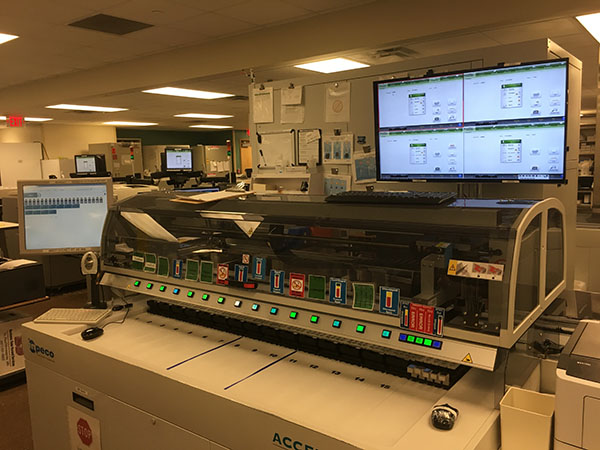Leaves Time for Higher-Thinking Tasks
2/6/2019 3:00:00 PM
Labor Market Information Regional Analyst Luke Greiner
Technologies that eliminate jobs or drastically change the way work is performed is a thread that runs through history and popular culture. Even now, print and digital book sales in the sci-fi/fantasy genre have doubled since 2010, according to publishing industry data.
With Minnesota’s low unemployment rates and a labor force that’s inching along, Luke Greiner, regional analyst, looks at automation’s role in maintaining Minnesota’s global position using the Information Technology & Innovation Foundation’s ‘at risk’ index of occupations. The index covers nearly every occupation recognized by official employment data. Using this index, Minnesota has a smaller relative concentration of occupations most at risk to be impacted by automation compared to the US.
Regardless of what’s in store, Minnesota workers must embrace lifelong learning – both on and off the job – if they want to stay relevant in the workplace.
Read The Impact of Automation on Minnesota’s Labor Market in Trends.
 Most occupations experience some degree of cost-cutting automation in the workplace. In The Labor Force in the Laboratory, medical and clinical laboratory technicians and technologists say automation is having the biggest on-the-job impact – and it is already happening.
Most occupations experience some degree of cost-cutting automation in the workplace. In The Labor Force in the Laboratory, medical and clinical laboratory technicians and technologists say automation is having the biggest on-the-job impact – and it is already happening.
The Medical Clinical Lab at Regions Hospital in Saint Paul relies on Rosie (for the humanoid robotic character on ‘The Jetsons’ TV comedy) to bring samples to the lab, then deliver them to the right location.
In addition to chemical tests, Regions automated their biological testing about three years ago. The histology lab is also adopting automation.
At Regions, automation removes all the ‘handling steps,’ according to Anthony Schaffhauser, Director of Healthcare Workforce Development, HealthForce Minnesota.
“Similar to manufacturing and warehousing automation, the lab samples go around to the various instruments automatically, and the samples are inventoried automatically,” he said. “Automatic inventory allows lab workers to eliminate almost all potential patient ID errors, as well as to pull a sample for follow-up tests with little effort.”
Automation results in a safety benefit, according to Schaffhauser: Samples don’t need to be handled, and it allows for automated results for tests that are negative, or in normal ranges.
Automation increases throughput, and larger labs have consolidated to purchase high-priced automated machines. The trade-off is between efficiency with consolidation of tests to larger automated labs and the turnaround time for results (samples must be couriered to the big labs, adding transit time). Therefore, Schaffhauser says lab testing at clinics and hospitals is expected to continue, rather than mega-automated labs taking over all of the testing.
Overall, the effects of automation on the lab jobs are a decrease in the time spent doing mundane tasks and more time spent on higher-thinking tasks that lab workers are trained to do. For example, there is now 24-hour biological testing rather than “batch” testing of cultures.
economy
workforce